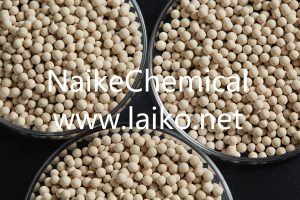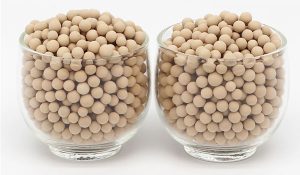What Are the Differences Between Activated Alumina and Molecular Sieve?
Activated alumina and molecular sieves are commonly used adsorbents in industrial production, playing irreplaceable roles. However, one question has always puzzled us: what is the difference between activated alumina and molecular sieves? What are their different functions? Today, we will analyze their specific differences from the aspects of structure, adsorption performance, and application.
Differences in the structure of activated alumina and molecular sieves
Activated alumina and molecular sieves are both solid materials with high porosity and high dispersion, and have a large specific surface area. However, the difference between activated alumina and molecular sieves can be seen from the distribution of their pore structures. The pore structure distribution of activated alumina is relatively disorderly, and the pore size distribution ratio is generally: micropores, mesopores, and macropores. The pore distribution of activated alumina is uneven.
But molecular sieves are different. There are many uniformly sized and ordered pores in the molecular sieve structure. Molecular sieves with different pore sizes are obtained based on the different molecular ratios of silica and alumina. Its models include: 3A molecular sieve, 4A molecular sieve, 5A molecular sieve, 13X molecular sieve and so on. Therefore, we can basically understand the differences between activated alumina and molecular sieves from the distribution of their pore structures.
Differences in adsorption performance between activated alumina and molecular sieves
Activated alumina has an uneven pore size distribution and poor selectivity, but has higher mechanical strength than molecular sieves, a larger specific surface area, and a special adsorption polarity for water. Therefore, in daily industrial production, activated alumina is often used as a desiccant, and can also be used as a catalyst carrier to make the catalyst have the characteristics of pressure resistance and high temperature resistance.
Activated alumina has strong activity due to its porous structure, high specific surface area, and unstable transition state. After adsorption saturation, it can be heated at around 175-315°C to remove water, and can be recovered multiple times. In addition to being used as a desiccant, it can also absorb oxygen, hydrogen, carbon dioxide, natural gas, and steam from lubricating oil.
The adsorption and separation performance of molecular sieves depends on the pore size and pore volume. The uniformly distributed pores of molecular sieves make their selective adsorption properties much better than those of activated alumina. The adsorption of molecular sieves is a physical change process. The main reason for the adsorption of molecular sieves is a “surface force” produced by the gravity of molecules on the solid surface. When the fluid flows by, some molecules in the fluid collide with the surface of the molecular sieve due to irregular movement, causing a decrease in the concentration of the molecules on the molecular sieve surface, thereby reducing the number of such molecules in the fluid, and achieving the purpose of separation and removal. In fact, generally speaking, we can understand that molecular sieves are like a sieve for gas and liquid molecules, determining whether they are absorbed based on their size. After saturation, both molecular sieves and activated alumina can be heated for regeneration. Adsorption and regeneration can be used multiple times until the adsorption performance and activity decrease to a certain range.
Differences in application between activated alumina and molecular sieves
Activated alumina can be called industrial desiccant. Over 80% of the air pressure drying equipment commonly used in industry is activated alumina, which can generally reach -40°C. Molecular sieves are only used when the drying depth is greater. The gases that can be dried using activated alumina desiccants are mainly acetylene, cracking gas, coke oven gas, hydrogen, oxygen, air, ethane, hydrogen chloride, propane, ammonia, ethylene, hydrogen sulfide, propylene, argon, methane, sulfur dioxide, carbon dioxide, natural gas, helium, nitrogen, chlorine and so on.
Molecular sieves have strong hydrophilic properties. In industrial production, sometimes it is necessary to control the moisture content of gases at a very low level. At this time, the drying depth of activated alumina cannot meet the requirements, but molecular sieves can adsorb at very low moisture levels, and the drying depth of molecular sieves can reach -70°C. At this point, a problem arises. The drying depth of molecular sieves is very high. Why not just use molecular sieves? We cannot understand that the cost of the first molecular sieve is too high. If we do not have such high requirements, sometimes it will cause waste. The second is the difference in adsorption conditions between the two. When the gas moisture content is high, the water absorption rate of activated alumina is much higher than that of molecular sieves. Under the same conditions, there is no activated alumina in the molecular sieve, which is obviously due to the molecular structure. However, when the moisture content is very low, the water absorption rate of the molecular sieve is stronger than that of activated alumina. In fact, sometimes we can combine activated alumina and molecular sieves for use, which can give full play to their respective advantages, make reasonable use of them, and achieve twice the result with half the effort.



